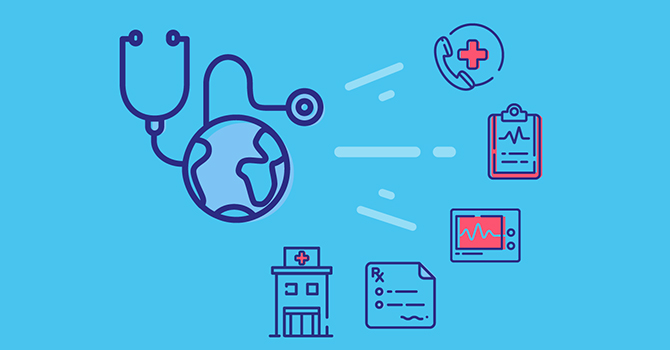A Comprehensive Overview on Exactly How Healthcare RCM Works to Enhance Billing and Collections
Navigating the complexities of health care income cycle administration (RCM) is crucial for carriers intending to enhance their billing and collections procedures. The overview unboxes the complexities of RCM, from client registration to accounts receivable administration, offering insights into maximizing each action.
Understanding Profits Cycle Administration
RCM is an essential management feature that incorporates the whole economic process of individual treatment, from the preliminary visit setting to the final settlement of the equilibrium. It is an intricate treatment made to identify, gather, and handle the earnings from the solutions supplied to patients.
The RCM procedure starts when a client schedules a visit and expands via the individual's care trip, including payment and collections. A vital goal is to decrease the time in between offering a service and getting settlement, therefore enhancing the company's monetary wellness. RCM includes numerous features such as individual registration, insurance policy confirmation, charge capture, coding, declares entry, repayment posting, and handling rejections and appeals.
Trick Elements of RCM
In the world of Profits Cycle Administration (RCM), understanding its crucial parts is essential to accomplishing economic performance within healthcare companies. RCM is a thorough procedure that encompasses numerous phases, each vital to ensuring effective invoicing and collections. The main parts include individual enrollment, insurance coverage confirmation, cost capture, coding, claim submission, repayment posting, and receivable monitoring.


When coded, cases are sent to payers, where accuracy is extremely important to prevent denials or hold-ups - Healthcare RCM. Repayment posting includes tape-recording the gotten payments, which enables for the reconciliation of accounts. Last but not least, accounts receivable monitoring concentrates on monitoring and dealing with overdue claims, making sure prompt follow-up and resolution
Each part of RCM is interconnected, and ineffectiveness in any kind of part can interrupt the entire cycle. For that reason, grasping these components is vital for doctor to optimize revenue and boost their monetary wellness.
Techniques for Efficient Invoicing

Systematizing billing procedures throughout the organization is an additional essential strategy. Developing clear standards for documents, coding, and entry assists preserve consistency and compliance with governing demands. Educating staff frequently on these treatments ensures everybody is current with the most recent adjustments in billing codes and payer plans.
Accurate cost capture is necessary in preventing income leak. Implementing routine audits and surveillance systems enables for the recognition and modification of disparities before they influence income. In addition, keeping open lines of communication with payers assists to promptly settle any type of conflicts or misconceptions that might develop.

Finally, interesting individuals early in the billing procedure by giving clear price quotes and educational products regarding their monetary duties can substantially decrease complication and enhance repayment timeliness. These techniques collectively add to a much more effective and monetarily healthy invoicing system.
Enhancing Collections Processes
Provided the intricacies of medical billing and the selection of payer demands, improving about his the collections procedure includes implementing strategic actions that make certain prompt and accurate repayment of services made. Automation devices can help in tracking claim conditions, sending out timely reminders to people, and managing rejections more effectively.
Clear and clear client interactions are important. Providing thorough descriptions of fees and providing versatile settlement strategies can raise patient fulfillment and prompt payments.
Normal audits of the collections process must be carried out to recognize locations for enhancement and ensure compliance with regulations. By assessing information, health care companies can recognize fads, prepare for prospective issues, and adjust approaches appropriately (Healthcare RCM). Ultimately, a well-enhanced collections procedure not just supports monetary health yet likewise adds to a much more seamless experience for people and team alike
Optimizing Revenue Streams
Building upon the foundation of a solid collections process, health care organizations can better bolster their economic security by tactically maximizing revenue streams. This involves a multi-faceted strategy, starting with a thorough evaluation of existing revenue sources to identify ineffectiveness more and locations for growth. Employing advanced data analytics devices makes it possible for organizations to gain insights right into payer mix, individual demographics, and service application patterns, permitting data-driven decisions that enhance earnings capture.
Applying automated invoicing systems can significantly reduce errors and speed up insurance claims refining, making sure that revenue is accumulated more effectively. Additionally, maximizing payer contracts via regular negotiations can boost compensation rates and terms, straight affecting the lower line. Expanding service offerings, such as incorporating telehealth or health care, can additionally draw in a wider individual base, thus enhancing earnings potential.
Another critical element is boosting client engagement and fulfillment, as satisfied clients are most likely to comply with treatment plans click now and make prompt repayments. Using adaptable settlement options and transparent payment techniques can improve collections and foster client commitment. Healthcare RCM. By taking on these strategies, healthcare organizations can produce a more durable financial structure, ensuring sustained development and stability in an ever-changing sector landscape
Conclusion
In conclusion, health care Income Cycle Management (RCM) plays an important duty in optimizing payment and collections procedures by incorporating crucial components such as individual registration, insurance coverage confirmation, fee capture, coding, declares submission, and balance due administration. By using sophisticated modern technology, standardizing treatments, and cultivating patient interaction, medical care service providers can significantly reduce claim rejections, speed up settlement cycles, and improve cash money circulation. This extensive approach to RCM inevitably leads to boosted economic performance and sustainability for health care companies.
The RCM procedure starts when a person timetables an appointment and expands through the person's care journey, including invoicing and collections.Another important element is boosting individual interaction and contentment, as pleased patients are much more most likely to adhere to treatment plans and make timely settlements. Providing versatile settlement choices and transparent billing methods can improve collections and foster person commitment.In conclusion, health care Earnings Cycle Monitoring (RCM) plays a vital duty in optimizing invoicing and collections processes by integrating essential elements such as client registration, insurance policy verification, charge capture, coding, asserts submission, and accounts receivable management. By utilizing sophisticated innovation, systematizing procedures, and cultivating person involvement, healthcare service providers can significantly lower case rejections, increase repayment cycles, and enhance money circulation.